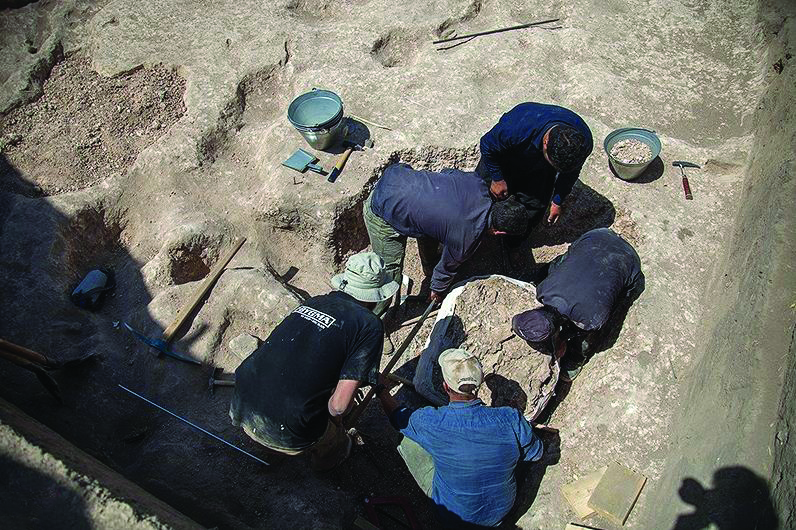It is now the third year that Iranian and Danish archaeologists are involved in research about the transition from hunting-gathering to agriculture in Iran.
The joint archaeology project is a result of a memorandum of understanding signed between Iran’s Research Institute of Cultural Heritage and Tourism (RICHT) and the University of Copenhagen’s Department of Cross-Cultural and Regional Studies.
Archaeologists from Razi University in the western city of Kermanshah and the Copenhagen University, the oldest center of higher learning and research institution in Denmark, are studying the emergence of Neolithic farming societies in the central Zagros Mountain regions, including Kermanshah.
Head of the project’s Iranian team, archaeologist Hojjat Darabi from Archaeology Department of Razi University is working with the experts who are preparing a detailed chronology of the cultural, climatic and environmental changes the area underwent from 13,500 BC to 6,500 BC, the period during which hunter-gatherers gradually became sedentary and began to grow crops.
In an interview with ILNA, Darabi spoke about the joint project. He said the ancient sites, excavated in earlier projects (1950-1960), are being re-examined with more advanced technology. “We are reconsidering some facts and data already published about the sites, trying to fill in the blanks regarding the consistency of existing theories.”
According to the lead Danish archaeologist of the project Tobias Richter, “The predominant theory is that agriculture began in and spread from the Levant, i.e. countries such as Syria, Jordan and Lebanon in the eastern Mediterranean. But that was probably because works (studies) have been concentrated there. Further east, in Iran’s Zagros Mountains, there are several areas which are just as interesting when trying to understand the transition from hunting-gathering to food production.”
Darabi says “the project will continue until we understand the role of environment, climate, ideology, livelihood, resource limitation and population in such a fundamental change of lifestyle (from hunting-gathering to farming and animal husbandry).”
Inaccurate Chronology
“In archaeology, ascribing dates to ancient communities is of outmost significance … With the help of new dating methods, we took a new look at the sites that were excavated before the 1979 Islamic Revolution. We found out that present academic textbooks include some misleading information from past excavations,” Darabi said.
He spoke of the dating of the archaeological site of Tepe Asiab 1 as among the wrongly estimated chronologies. Tepe Asiab 1 is an Early Neolithic settlement in Dorudfaraman rural district, Kermanshah. According to Darabi, “human settlement at the site had been estimated to date back to the 8th and 9th millennia BC; but the estimation is now corrected to the mid 10th millennium BC.”
Tepe Asiab 1 was discovered during the “Iranian Prehistory Project,” led by American archaeologist and anthropologist Robert John Braidwood (1907-2003), a pioneer of scientific archaeology, and a leader in Near Eastern prehistory.
The site was briefly excavated in 1960 under the direction of American anthropologist Bruce Howe (1912-2012). Howe described the deposits in Asiab as “a chaotic jumble of animal bones, freshwater clam shells, coprolites, flint-works and other artefactual debris, rocks and traces of fire and ash, as well as numerous debris-filled pits”, covering an area of 20,000 sq meters, of which 130 sqm was excavated.
At the bottom of the main excavation area, Howe discovered “the vestige of a large shallow-basined oval excavation into virgin soil that suggested a refuse pit or possibly man-made semi-subterranean structure.” Two burials were found just above this structure in the debris.
Based on the techno-typology of the chipped stone artifacts and radiocarbon dates, Howe placed the settlements at Asiab at around 8,000 BC or later. Howe’s brief 1983 article, which lacks a site plan or accompanying photographs, left unanswered questions about the chronology, site function and economy of the site. The next season of the Iranian-Danish excavation project will probably start in March 2019 when Tobias Richter will return from Denmark, Darabi said. The project is funded by a grant from David Collection Museum and Foundation in Denmark. The Kermanshah office of the cultural research institute is supporting the project in fieldwork.


